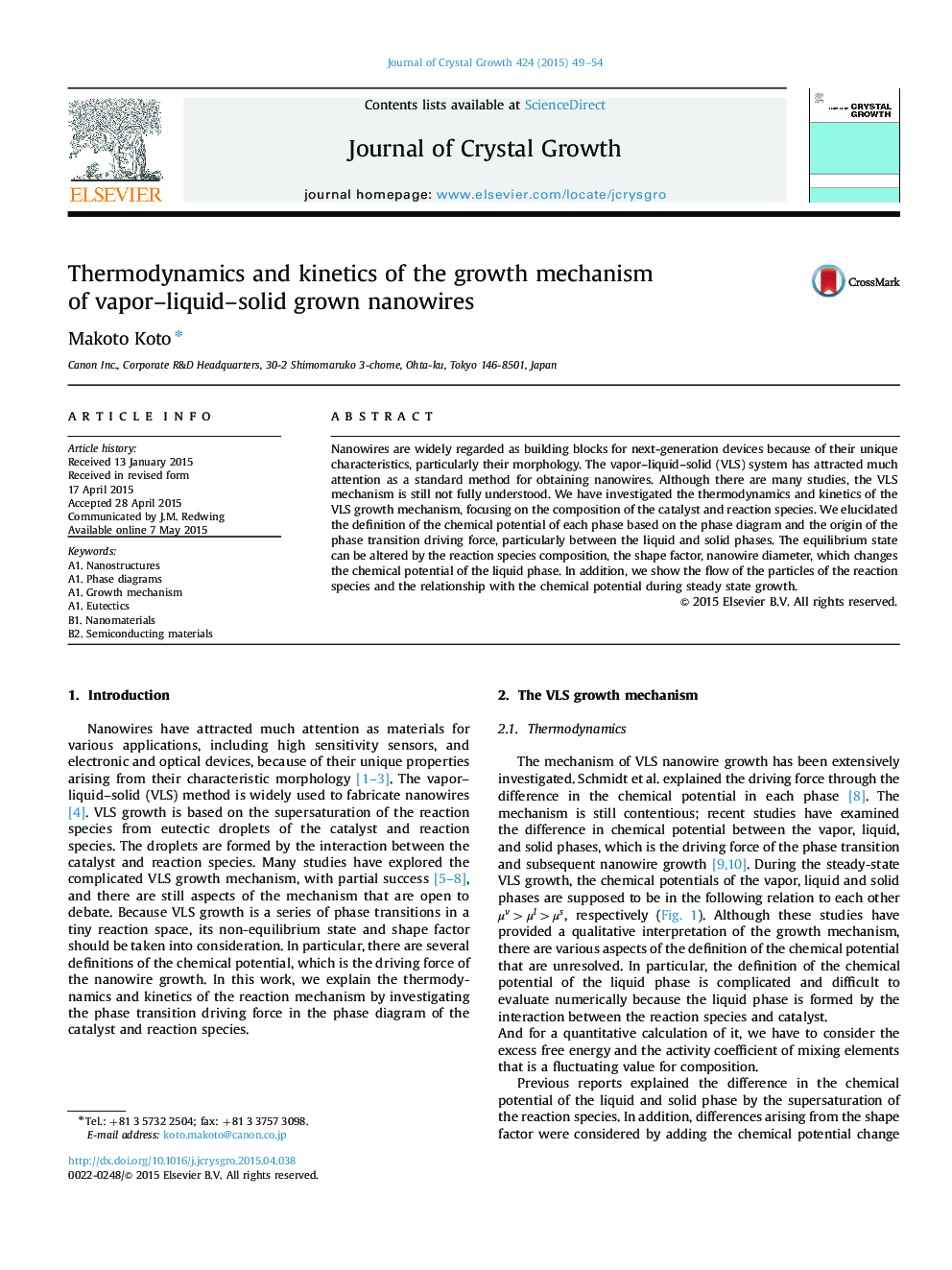| Article ID | Journal | Published Year | Pages | File Type |
|---|---|---|---|---|
| 1789967 | Journal of Crystal Growth | 2015 | 6 Pages |
•The driving force of VLS nanowire growth is interpreted systematically.•The combined thermodynamic and kinetic explanation gives consistent description.•Detailed consideration of the binary phase of the eutectic droplet is important.
Nanowires are widely regarded as building blocks for next-generation devices because of their unique characteristics, particularly their morphology. The vapor–liquid–solid (VLS) system has attracted much attention as a standard method for obtaining nanowires. Although there are many studies, the VLS mechanism is still not fully understood. We have investigated the thermodynamics and kinetics of the VLS growth mechanism, focusing on the composition of the catalyst and reaction species. We elucidated the definition of the chemical potential of each phase based on the phase diagram and the origin of the phase transition driving force, particularly between the liquid and solid phases. The equilibrium state can be altered by the reaction species composition, the shape factor, nanowire diameter, which changes the chemical potential of the liquid phase. In addition, we show the flow of the particles of the reaction species and the relationship with the chemical potential during steady state growth.
